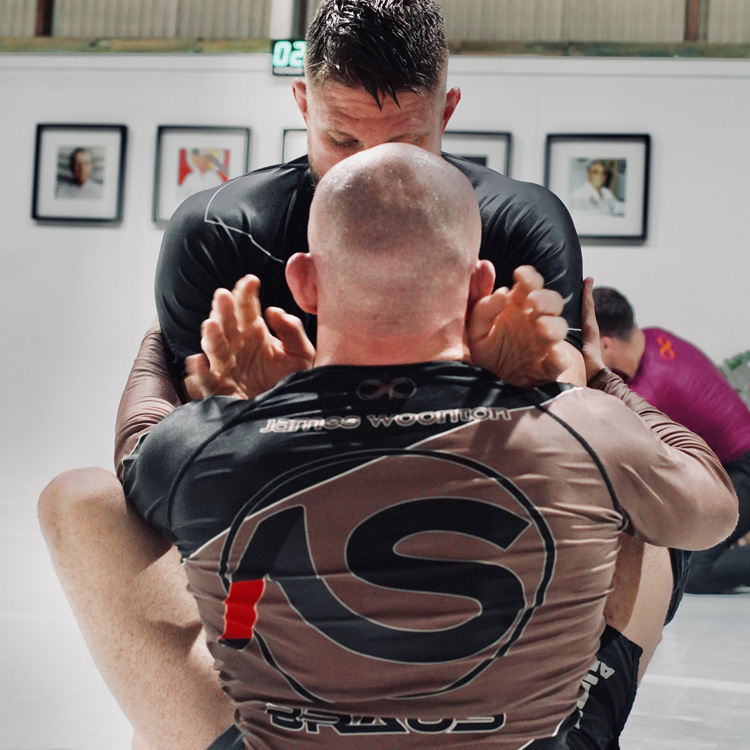What is BJJ No GI
No-Gi BJJ, given its similarity to situations where no or minimal clothing can be grabbed (like in swimming attire or summer clothing), focuses more on controlling the opponent through body locks and underhooks. This style can be more practical in scenarios where grabbing clothing isn’t an option.
In the sporting context, No-Gi BJJ is generally faster-paced and more dynamic than Gi BJJ. Without the Gi grips, practitioners rely more on clinching, making the practice more akin to wrestling. This style emphasizes speed, agility, and the ability to transition quickly between positions.
Submissions in No-Gi BJJ often require swift execution due to the lack of fabric to hold onto.
Both Gi and No-Gi BJJ offer unique challenges and advantages in terms of technique and strategy, whether applied in self-defence or sports settings. Practitioners often train in both to gain a well-rounded skill set.
Gallery
-
Community Feel
Immerse yourself with likeminded individuals who are committed to help each other succeed. -
Safe & Inclusive
Arte Suave upholds strong values around safety, respect and kindness. Discrimination or any form of bullying will not be tolerated. -
Strict Rules
Respect and discipline are fundamental aspects of BJJ practice and are promoted and enforced in the academy at all times. -
Blue Card Certified
All trainers are Blue Card certified, meaning they are recognised for their rank and their ability to work with children.
Frequently Asked Questions
-
What is Brazilian Jiu Jitsu good for?
Brazilian jiu-jitsu is a martial art and combat sport system that focuses on grappling and ground fighting. Since its inception in 1882, its parent art of judo (focuses on takedowns) was separated from older systems of Japanese jujutsu by this important difference that was passed on to Brazilian jiu-jujitsu.
It is not solely a martial art; it is also a sport, a method for promoting physical fitness and building character in people, and ultimately a way of life.





